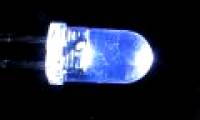
On July 6, scientists from Tel Aviv University (Israel) announced a nanomaterial that can 'catch' parts of the body to produce electricity.

Israeli scientists have found a way to generate hydrogen from microscopic algae, showing the potential of producing electricity from plants in the future.

The device is similar to solar panels, the difference is that it does not draw energy directly from the sun but from the temperature change between day and night.

US researchers have just developed a technique to create electricity based on the flow of ultra-small liquid particles, helping pedestrians generate electricity large enough to

Solar energy application is by far the largest scale and probably even in the future.

A luxury hotel in the Danish capital produces electricity by asking guests to step on bicycles connected to generators.

An energy company in Maryland (USA) has designed a gigantic energy complex of 800m high.

According to a reporter in Mexico, Mexican scientist Arturo Solis Herrera recently created a battery that can be used to turn on a flashlight for 100 years by using water and

Using 100% recycled materials such as old bicycle slopes, automotive batteries, and wood chips ... Max Robson invented wind turbines with a cost of only 20 pounds (615 thousand

Scientists at Okinawa University of Science and Technology (OIST), Japan, successfully exploited the energy of the ocean currents, according to UPI.
 On July 6, scientists from Tel Aviv University (Israel) announced a nanomaterial that can 'catch' parts of the body to produce electricity.
On July 6, scientists from Tel Aviv University (Israel) announced a nanomaterial that can 'catch' parts of the body to produce electricity. Israeli scientists have found a way to generate hydrogen from microscopic algae, showing the potential of producing electricity from plants in the future.
Israeli scientists have found a way to generate hydrogen from microscopic algae, showing the potential of producing electricity from plants in the future. The device is similar to solar panels, the difference is that it does not draw energy directly from the sun but from the temperature change between day and night.
The device is similar to solar panels, the difference is that it does not draw energy directly from the sun but from the temperature change between day and night. US researchers have just developed a technique to create electricity based on the flow of ultra-small liquid particles, helping pedestrians generate electricity large enough to
US researchers have just developed a technique to create electricity based on the flow of ultra-small liquid particles, helping pedestrians generate electricity large enough to Solar energy application is by far the largest scale and probably even in the future.
Solar energy application is by far the largest scale and probably even in the future. A luxury hotel in the Danish capital produces electricity by asking guests to step on bicycles connected to generators.
A luxury hotel in the Danish capital produces electricity by asking guests to step on bicycles connected to generators. An energy company in Maryland (USA) has designed a gigantic energy complex of 800m high.
An energy company in Maryland (USA) has designed a gigantic energy complex of 800m high. According to a reporter in Mexico, Mexican scientist Arturo Solis Herrera recently created a battery that can be used to turn on a flashlight for 100 years by using water and
According to a reporter in Mexico, Mexican scientist Arturo Solis Herrera recently created a battery that can be used to turn on a flashlight for 100 years by using water and Using 100% recycled materials such as old bicycle slopes, automotive batteries, and wood chips ... Max Robson invented wind turbines with a cost of only 20 pounds (615 thousand
Using 100% recycled materials such as old bicycle slopes, automotive batteries, and wood chips ... Max Robson invented wind turbines with a cost of only 20 pounds (615 thousand Scientists at Okinawa University of Science and Technology (OIST), Japan, successfully exploited the energy of the ocean currents, according to UPI.
Scientists at Okinawa University of Science and Technology (OIST), Japan, successfully exploited the energy of the ocean currents, according to UPI.





 Do signals from extraterrestrial civilizations detected by Sky Eye really exist?
Do signals from extraterrestrial civilizations detected by Sky Eye really exist? 'City without air conditioning' in China: People don't know what heat is!
'City without air conditioning' in China: People don't know what heat is! The element of the sun god is giving scientists a headache
The element of the sun god is giving scientists a headache Unique Village: Roofs Become Roads for Residents!
Unique Village: Roofs Become Roads for Residents! Top 7 strange psychological effects of the brain that we all have without knowing
Top 7 strange psychological effects of the brain that we all have without knowing Which is the most terrifying bedroom elixir in Chinese history?
Which is the most terrifying bedroom elixir in Chinese history? Earth's core may start rotating in reverse
Earth's core may start rotating in reverse A day in Japan can be up to 30 hours long, does this country live in a different 'timeline'?
A day in Japan can be up to 30 hours long, does this country live in a different 'timeline'?